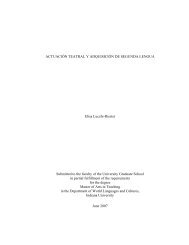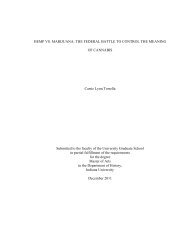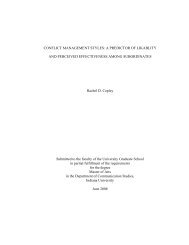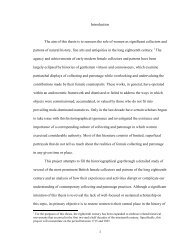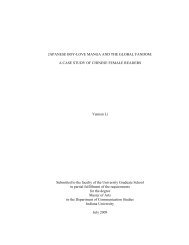Amir Saad Thesis final revision 03x - IUPUI
Amir Saad Thesis final revision 03x - IUPUI
Amir Saad Thesis final revision 03x - IUPUI
You also want an ePaper? Increase the reach of your titles
YUMPU automatically turns print PDFs into web optimized ePapers that Google loves.
10<br />
Panavia 21 has a bond strength to dentin in root canals ranging from 16 MPa<br />
at the cervical area to 21 MPa apically. 54 This variation has been attributed to the<br />
dentinal tubule density, which decreases from cervical to apical dentin. 55 Bond<br />
strength is related to the area of bonded solid dentin rather than tubule density. 56<br />
Zinc phosphate is one of the oldest luting agents and has been used in dentistry<br />
for over a century. In 1879, Dr. Peirce 57 mixed for his colleagues a hard, nearly white<br />
material composed of oxide of zinc and glacial phosphoric acid. Since this early<br />
descriptive use of zinc phosphate cement, only minor changes have been made by<br />
manufacturers in its basic composition. Crowns cemented using zinc phosphate with<br />
margins placed in dentin did not demonstrate any significant microleakage difference<br />
than those cemented in enamel. 58 Zinc phosphate does not chemically bond to tooth<br />
59, 60<br />
structure.<br />
It was demonstrated that Panavia resin cement gives additional resistance to<br />
fracture compared with the brittle conventional zinc phosphate luting agent. 61 Resin<br />
bonding of posts significantly lowers microleakage as compared with posts luted with<br />
conventional zinc phosphate. 62 Zinc phosphate demonstrated more retention for<br />
tapered posts than zinc polycarboxylate or epoxy cements. 63 Panavia 21 and zinc<br />
phosphate demonstrate no statistical differences in post retention. 64 According to<br />
Schmage et al. 65 zinc phosphate cement used in post cementation exhibited tensile<br />
bond strength as good as resin composite cements like Compolute Aplicap, Flexi-<br />
Flow cem, Panavia 21 EX, Tenet and Twinlook cement.<br />
The minimal cement film thickness was obtained by using glass ionomer<br />
cements according to Wang et al. 66 and White and Kipnis 67 ; however, in other studies,<br />
68, 69<br />
lower marginal discrepancies were found with resin cements.



